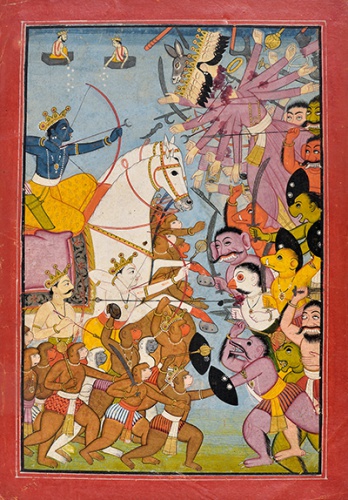THE RAMAYANA — it’s one of the greatest tales ever told, ubiquitous in life and culture as popular entertainment and moral guidance from Ayodhya in the foothills of the Himalayas, where it began, to the homelands of Southeast Asia to which the story spread.

Basohli style, Pahari The portrait of Rama c 1730 opaque watercolour and gold on paper National Museum, New Delhi
One of the two great epics of ancient India, strangely parallel to Homer’s Odyssey and Iliad, the Ramayana traces the odyssey of god-hero Rama (an incarnation of Vishnu), who, with his brother Laksmana and the monkey god Hanuman, rescue his wife Sita from the clutches of the multi-headed Sri Lankan demon Ravana.
Scholars believe the narrative is not just a “tale of love, law, accounting, betrayal and the victory of good evil,” the story of the Ramayana rooted in the great clash of civilisations that saw the Aryan people in the north assume ascendancy over the Dravidian people in the south of India.
Now, in a first for the National Gallery of Australia, the national institution has teamed up with the National Museum in New Delhi to present a rare show of Indian miniature paintings.

Guler style, Pahari The great battle between Rama and Ravana c 1780 opaque watercolour on paper National Museum, New Delhi
The best known account of the story is attributed to a transcription by Valmiki, a poet of the fourth century BCE — I’m pleased to say I’ve read the whole Valmiki (in translation) while preparating for a theatre production some year ago — but The Ramayana has as many variants as it does narrators.
In this exhibition The Ramayana is retold through 101 paintings, each illustrating a key moment from the narrative, starting with a painting of the sage Narada asking Valmiki to write the story. But that’s just the beginning of a very long tale.
“The story of Rama: Indian miniatures from the National Museum, New Delhi”, Orde Poynton Gallery, NGA, May 22 –August 23. Free admission.
The post Epic Indian odyssey retold in miniatures appeared first on Canberra CityNews.